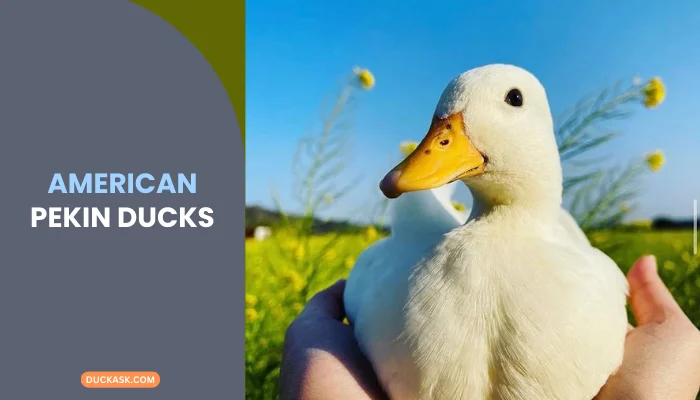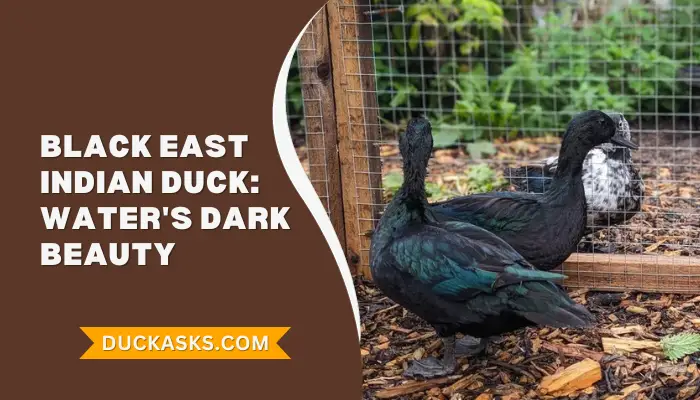Call Duck: History, Behavior And Breed Guide
The Call Duck is a lively duck with plenty of charisma, primarily bred and raised for ornamental or companionship purposes. This name comes from the Dutch word ‘Kool,’ which means Trap.
Hunters used this duck breed to lure other ducks and trap them.
Currently, fanciers raise the Call Duck for other purposes, but they are not good layers. They also don’t have sufficient meat productivity either.
Still, many other factors make this duck one of the most satisfying to fancy. Stick around to learn all about this breed!

Looking for more articles about duck breed:
Call Duck Profile
| Name | Call Duck |
|---|---|
| Scientific Name | Anas platyrhynchos domesticus |
| Common Names | Call, Call Duck |
| Origin | Origin Netherlands |
| Size | Small |
| Weight | 15 to 26 Ounces |
| Lifespan | 10 Years |
| Feather Color | White, Other Colors Available |
| Climate Tolerance | High |
| Behavior | Friendly |
| Flight | Yes |
| Breeding and Maintenance | Easy |
| Easy to Keep? | Yes |
| Duck Purpose | Ornamental, Companionship, Pet |
| Egg Productivity | Low |
Overview
Call Ducks, also named Call, are popular ornamental and companionship ducks. These ducks are hassle-free and super friendly to kids and adults alike.
History and Origins of Call Ducks
Records attribute the origin of the Call Duck to the Netherlands, approximately during the seventeenth century. In this country, the purpose of this duck was to act as a decoy.

This is because it produces a uniquely high-pitched call that lures ducks into funnel traps.
Then, the duck was introduced to the British Isles during the decade of 1850. Then, this breed became one of the earliest waterfowl breeds to receive a standardized status.
Over the years, the Call Duck has become the breed that has earned the most exhibition contests in the United States. The breed is so popular that many themed cafés exist in China.
Physical Characteristics and Features
Call Ducks are descendants of Mallard ducks. However, selective breeding has led to the Call Duck having shorter bills and smaller bodies compared to the Mallard duck.
Let’s analyze the other physical characteristics of this duck.

Appearance and Body Structure
The Call duck is small, with a petite body and short beak. This duck is a Bantam breed, which means that they are smaller versions of larger poultry.
Typically, the drake (male) weighs from 19 to 26 ounces, whereas the hens (female) weigh between 15 and 20 ounces.
Feather Colors
This breed of duck is popular for its white color, but other variations also exist. For example, the Call Duck can be black, silver, magpie, pie, blue, silver, bibbed, and gray.
As for the eyes, they’re usually black or dark brown.
Differences Between Call Ducks and Call Drakes
The most significant difference between the Call duck and the Call drake is the weight. For example, Call drakes weigh six ounces more than the Call duck hen.
Behavior and Traits of Call Ducks
Call ducks are lively ducks with a friendly and quiet personality. They’re charismatic and can be sociable. Plus, the ducks are cute and small, which makes them ideal for companionship.
One thing to consider about this duck is that it has a high-pitched call and can be very vocal. Therefore, you must be ready to hear them constantly.

Diet
You can feed traditional food to the Call Ducks. For example, you can provide wheat and duck pellets to secure vitamins and niacin content.
Poultry grit, fruits, and food like cucumbers and peas are also good for Call Ducks. Likewise, the ducks will eat worms and insects when they’re outside.
Ducklings need more care. Preferably, you shall feed them formulated food, fruits like tomato flesh, and berries too.
Breeding
Call ducks mate during the spring, usually from April to October. They can mate when they’re 25 to 30 weeks old, and the ducks do not mate for life.
Typically, they find new partners, and the hens lay slightly over 150 eggs yearly.
Lifespan
Call ducks can live up to 10 years in the right environment. For instance, you must provide proper shelter, access to water, a pond, and food. Likewise, fencing is necessary to keep predators away.
Breeding and Raising
Breeding and raising Call Ducks is relatively easy. The ducks are small and don’t consume much space, and they don’t require much maintenance.
Generally, the biggest concern is providing food of appropriate size because the ducks don’t chew. So, it’s important to ensure that they eat well.

Some Tips and Considerations for Successful Breeding
- If you buy a mating pair, make sure to get them from a renowned provider.
- Take the ducks to the vet if you notice any health issues, and consider separating them from the flock until then.
- This duck can be broody, so make sure to keep this consideration in mind.
- Provide duck pellets to keep the ducks healthy and sunflower seeds to maintain their shiny plumage.
- Avoid cross-breeding the Call Duck with other breeds.
Feeding and Housing Requirements
Adult Call Ducks will eat twice a day, whereas ducklings need to eat three times minimum.
Fortunately, they’re very independent and don’t need further assistance. All you have to do is provide the food and make sure it’s accessible for them. Since the ducks don’t overeat, you don’t have to worry about the food amount.
Housing Requirement
The ideal housing for Call Ducks can be a duck house, coop, or run. In any case, the ducks should have enough space to move freely.
A pond would also be a good addition, as it will allow the ducks to swim and enjoy the water during hot days.
The Egg Productivity of Call Ducks
Call Duck hens lay between 50 and 150 eggs every year. The eggs are white and small, usually resembling chicken eggs.
This low production of eggs and their small size does not make this duck breed the most reliable as layers. Still, you can enjoy the eggs if you want to.
The Meat Quality and Popularity of Call Ducks
The meat quality of the Call Duck is good and you can prepare versatile dishes with this duck.

Nonetheless, the ducks are small and don’t weigh much, meaning it’s not productive to raise them for meat consumption. This is because breeding and raising them takes a lot of time for the little meat you obtain.
Frequently Asked Questions
Are Call ducks good to eat?
Call ducks are not good to eat because of their small size, meaning there isn’t enough meat gain. However, the meat of this duck is tasty and can make delicious dishes if you use it for that purpose.
Are Call Ducks friendly?
Yes, Call ducks are among the friendliest ducks to raise. They’re small, which already makes them ideal for children. Also, the ducks have a docile personality that keeps them from being aggressive to family members and strangers.
Why is it called a Call duck?
People call it the Call duck because of the Dutch word Kool, which means trap. Hunters in the Netherlands used the duck’s high-pitched call to lure in other ducks and capture them in funnel traps. Hence, the name and its use in the English language.
Conclusion
The Call Duck is a breed with a fascinating history behind it. While hunters first used it as bait to attract other ducks, this duck now has a more noble purpose as an ornamental animal or for companionship.
Plus, the ducks make great friends for children and families. For more articles like this one, visit us on Facebook. Twitter, and Pinterest. We publish and share insightful information about ducks, birds, and more!
References:
- https://www.waterfowl.org.uk/domestic-waterfowl/call-ducks/
- https://www.omlet.co.uk/breeds/ducks/call_duck/
Image Credit:
- https://www.instagram.com/thequacknificent8/
- https://www.instagram.com/marshmallow_olaf/






